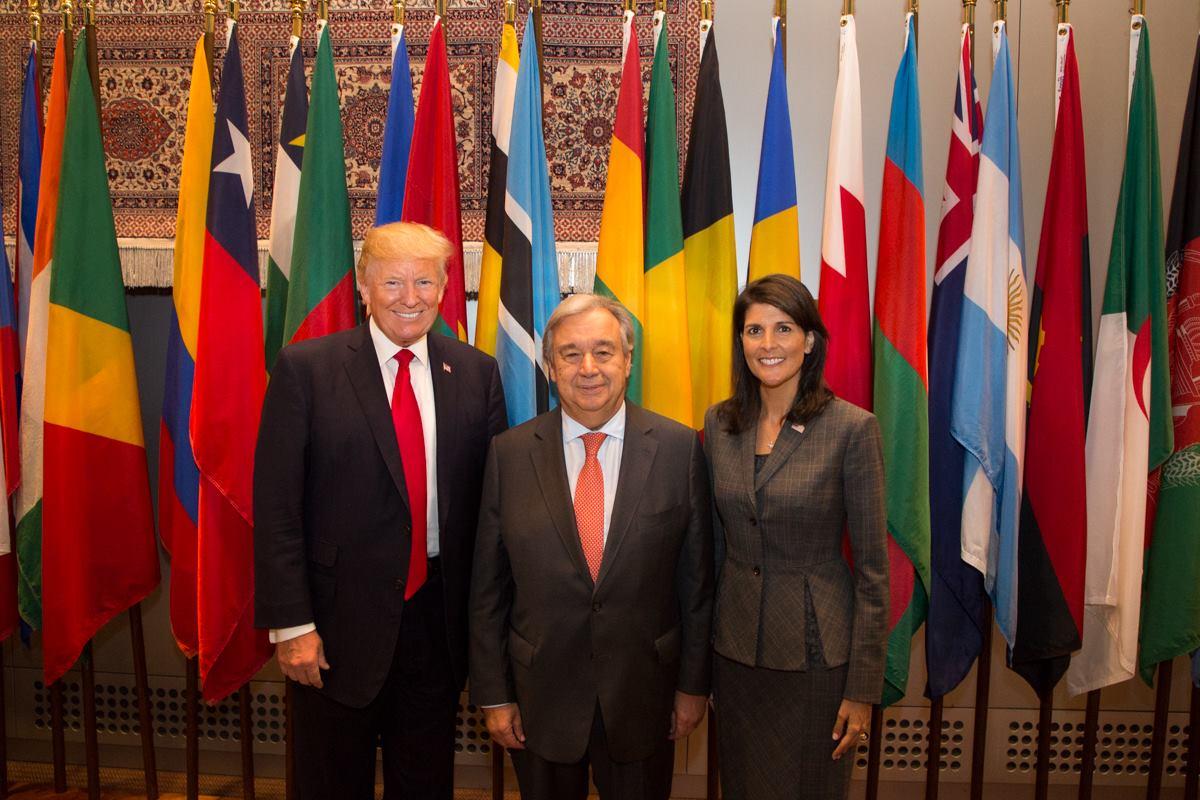Something increasingly rare happened last week: The Trump administration worked cooperatively with the rest of the world to advance the common good.
On July 5th, the United Nations approved approved a major overhaul of how the institution organizes itself to prevent conflict and promote peace and security. This was the first major reform of the UN’s peace and security apparatus in decades and it was driven largely through a partnership between the Secretary General and US Ambassador to the United Nations.
In many large institutions, org charts are destiny; that is, how bureaucracies are organized can profoundly shape the outcomes and the effectiveness of that institution. The reforms approved by UN member states last week is a major restructuring of the part of the UN Secretariat’s org chart that deals with peace and security. Its new design is intended to make the UN a more efficient bureaucracy that is better able to prevent crises before they spiral out of control.
This reform is a good example of what a productive relationship between the United States and the United Nations could look like.
Antonio Guterres and Nikki Haley arrived at the United Nations just weeks apart from each other in January 2017 to start their respective jobs. Both pledged an ambitious reform agenda to streamline the UN bureaucracy, cut costs and improve efficiencies. To be sure, some of their interests differed: Nikki Haley stressed cost cutting, while Antonio Guterres emphasized reforms that would enable the UN to do a better job of preventing conflict, rather than simply responding to it. (This, of course, is also a form of cost cutting — but the payout is over a longer term).
They worked together to satisfy both these interests–and the interests of other key member states and stakeholders — to devise a major overhaul of the UN’s peace and security apparatus. The UN’s fifth committee, which sets the UN’s budgetary priorities, unanimously approved this reform package on July 5th as part of a larger measure that approved the UN’s peacekeeping budget.
These reforms re-focus the UN on conflict prevention.


The centerpiece of this reform is creating two new UN entities out of two existing ones; and also creating three new regional bodies (for Africa, the Middle East and Asia-Pacific) that oversee the spectrum of conflict prevention and conflict management in those regions.
Elements of the current Department of Political Affairs, which is the lead body for mediating conflicts, are combing with the UN’s Peace-Building Support Office to create a new Department of Political and Peace-Building Affairs. The currently-existing Department of Peacekeeping Operations is being reconstituted as the Department of Peace Operations and will oversee the management of peacekeeping operations and large-non peacekeeping missions (like the ones in Afghanistan and Iraq).
Missions in the field will report to one of three regional assistant secretaries general, who can take a broader view of the day-t0-day activities of all UN peace and security operations in a country.
The idea behind these reforms is to both eliminate some duplications that existed and also enhance the UN’s ability to predict and prevent conflict. In particular, having regional assistant secretaries general should facilitate closer collaboration between disparate offices at the UN and enable a more efficient conflict management strategies, customized for each context.
That is the theory, at least. And it now has the backing of all UN member states, which approved the reforms.
The fact that the United States has so fully embraced these reforms is key.
On July 5, the US Mission to the UN hailed this reform package as “a restructuring that cuts through silos and UN bureaucracy, increases commonsense UN coordination, removes redundancies, and ultimately makes the UN a more accountable, transparent, and efficient organization.”
“We’re grateful for Secretary-General Guterres’ leadership on UN reform and for the support of Member States in moving these necessary reforms forward,” Nikki Haley said in a statement. “The world needs a UN that is disciplined, efficient, accountable, and results-driven. With these reforms come opportunities to finally bring the UN into the 21st century, get rid of things that aren’t working, and help the UN work smarter.”
Last year, Donald Trump’s first appearance at the United Nations as president came one day before his speech to the UN General Assumably in which he hosted a mini-summit on UN reform. That summit was intended to provide momentum for a package of UN reforms supported by Nikki Haley and Antonio Guterres, including this just-passed reform of the UN’s peace and security apparatus.
From a political standpoint, Nikki Haley’s embrace of these reforms gives the Trump administration a “win” at the United Nations — though it’s a victory that is not conditional on another country “losing.” Rather, this is a good example of how the United States can work cooperatively with other countries, through the United Nations, to advance its own interests while promoting a global good.
